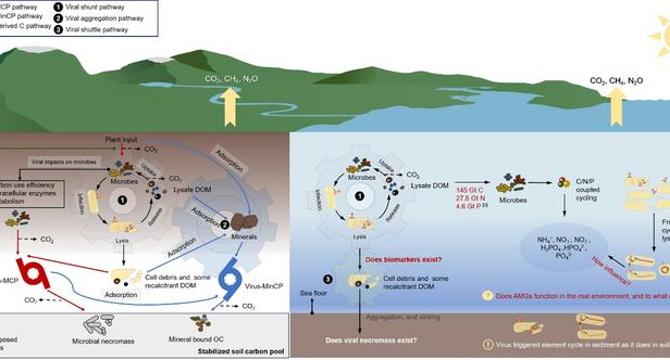Bioengineer
1w
170

Image Credit: Bioengineer
Viruses: Revolutionizing Our Understanding of Biogeochemical Cycles
- Viruses are key players in biogeochemical cycles, impacting carbon, nitrogen, and phosphorus.
- When viruses infect bacteria and archaea, they initiate lysis, which releases organic matter and enriches the environment with dissolved organic matter.
- Viral lysis boosts microbial productivity, leading to increased carbon storage in soils and sediments, an integral component of ecosystem functioning.
- The interplay between viral activities and biogeochemical cycles also impacts soil fertility and plant nutrition, fostering agricultural productivity.
- The research brought forth the novel term 'viral aggregation', describing the behavior of viral products in soil and sediment environments.
- Integrated models could elucidate the multifaceted roles of viruses in driving biogeochemical processes.
- Researchers are eager to identify viral biomarkers that can serve as indicators of biogeochemical activity in various environments, potentially guiding environmental management practices.
- Accurately quantifying the contribution of viruses to elemental cycles can inform land-use policies and conservation strategies.
- Effective methodologies for distinguishing viral behaviors in lytic versus lysogenic cycles are needed.
- This field offers invaluable insights that can lead to sustainable management practices and strategies to combat pressing environmental issues.
Read Full Article
10 Likes
For uninterrupted reading, download the app